Being on the water is one of the most exciting things about owning a boat. On the water is where you can relax after a long week, gather your thoughts during a challenging time in life, or live out your dreams of becoming a professional fisherman.
If you fall into the latter category, or even if you’re just naturally curious, you may find yourself wondering what’s under the water. If you’re able to live your best life above the surface, then something is likely living its best life underneath.
This is where marine electronics come in handy. From depth sounders to fishfinders to GPS units, there is an electronic out there to help you see what’s lurking below. Not sure what the difference is between the three? No worries. We’ll shed some light on understanding marine electronics below.
What is a Depth Sounder?
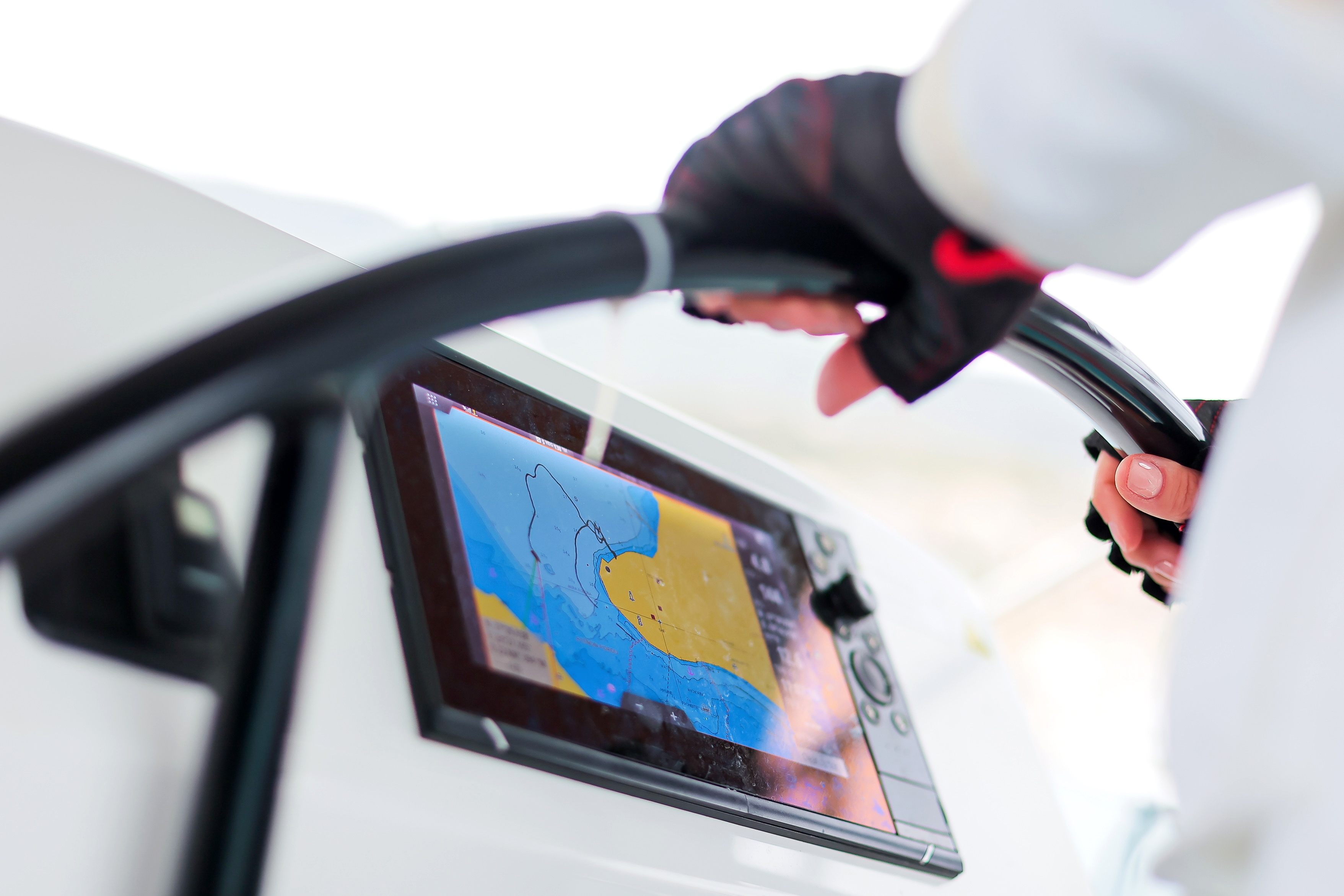
A depth sounder is a type of marine navigation electronic that uses SONAR to determine water depth. It can also be used to visualize and locate objects or fish under the water. They’re often used by commercial fishing boats because of their navigational and charting abilities, but they’re available for all types of vessels.
How Does a Depth Sounder Work?
By transmitting a pulse into the water, a depth sounder measures the rate sound returns from any solid object it hits before reaching the bottom. Once received, the depth sounder translates that data into a depth measurement or a three-dimensional image.
What is a Fishfinder?
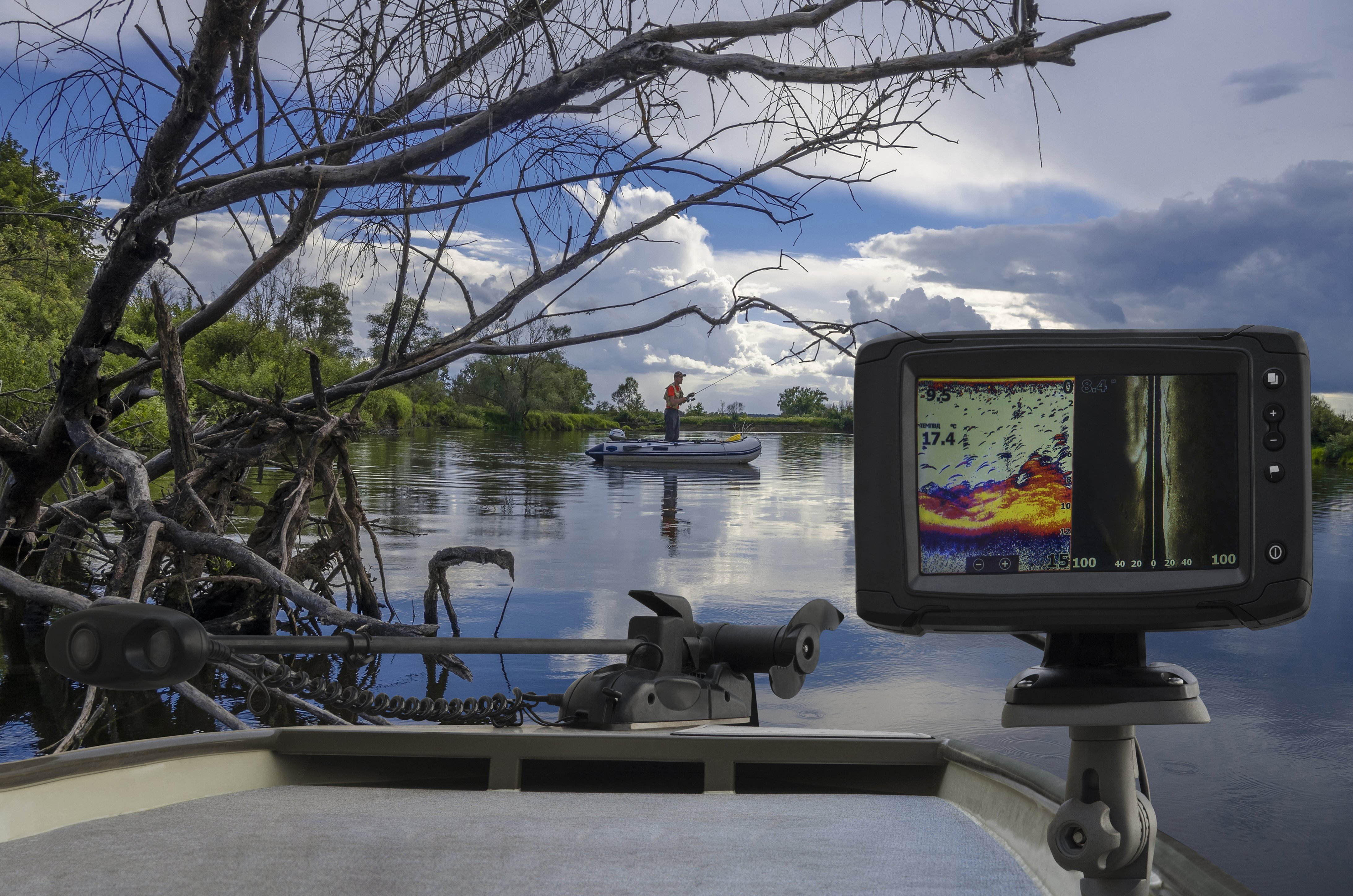
A fishfinder is a type of depth sounder. Most fishfinders return an image based on a single static object, like a fish. In contrast, a depth sounder usually returns images of all objects that are denser than the water itself, like rocks or metal.
When it comes to a fishfinder, there are three basic types:
- Standalone Fishfinder
- Combination Fishfinder/Chartplotter
- Networked System Fishfinder
Standalone Fishfinder
Providing a simple image of what’s hanging out below your boat, a standalone fishfinder typically offers the biggest display and impressive performance for the lowest cost. Anglers using small boats in small inland lakes generally gravitate toward the standalone type.
Combination Fishfinder/Chartplotter
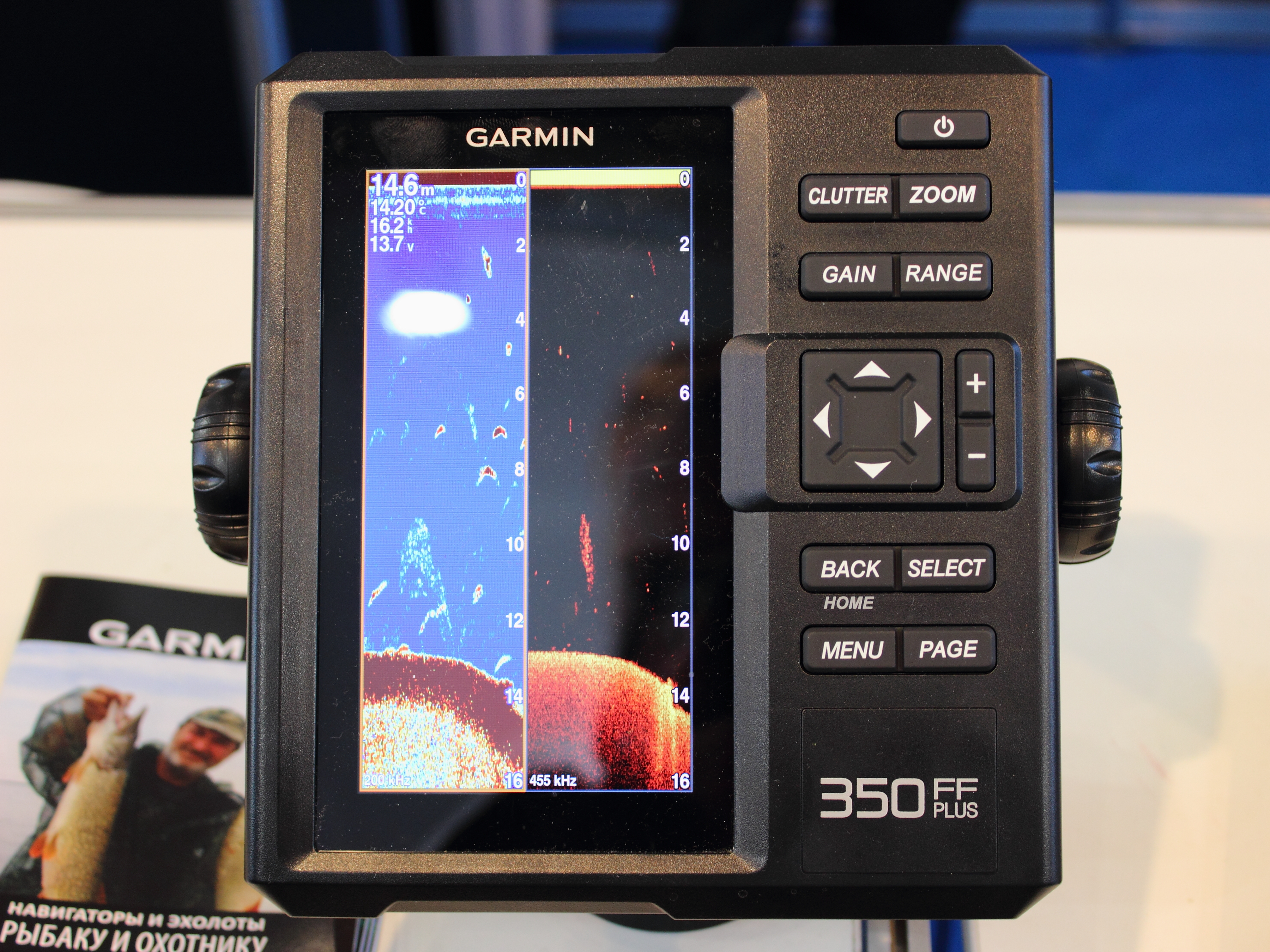
Popular among owners of mid-sized boats, a combination fishfinder/chartplotter uses GPS to navigate toward fruitful fishing areas. You can use these with a split screen view that shows the GPS feature on one side and the fishfinder view on the other. When GPS navigation isn’t needed, simply turn it off to have the fishfinder return to full-screen mode.
Networked System Fishfinder
With a fully networked system fishfinder, you get the best of the combination type with an improved range of data sources. Many of these have SiriusXM satellite radio and Bluetooth capabilities that allow you to control them directly from your smartphone.
What is a Transducer?
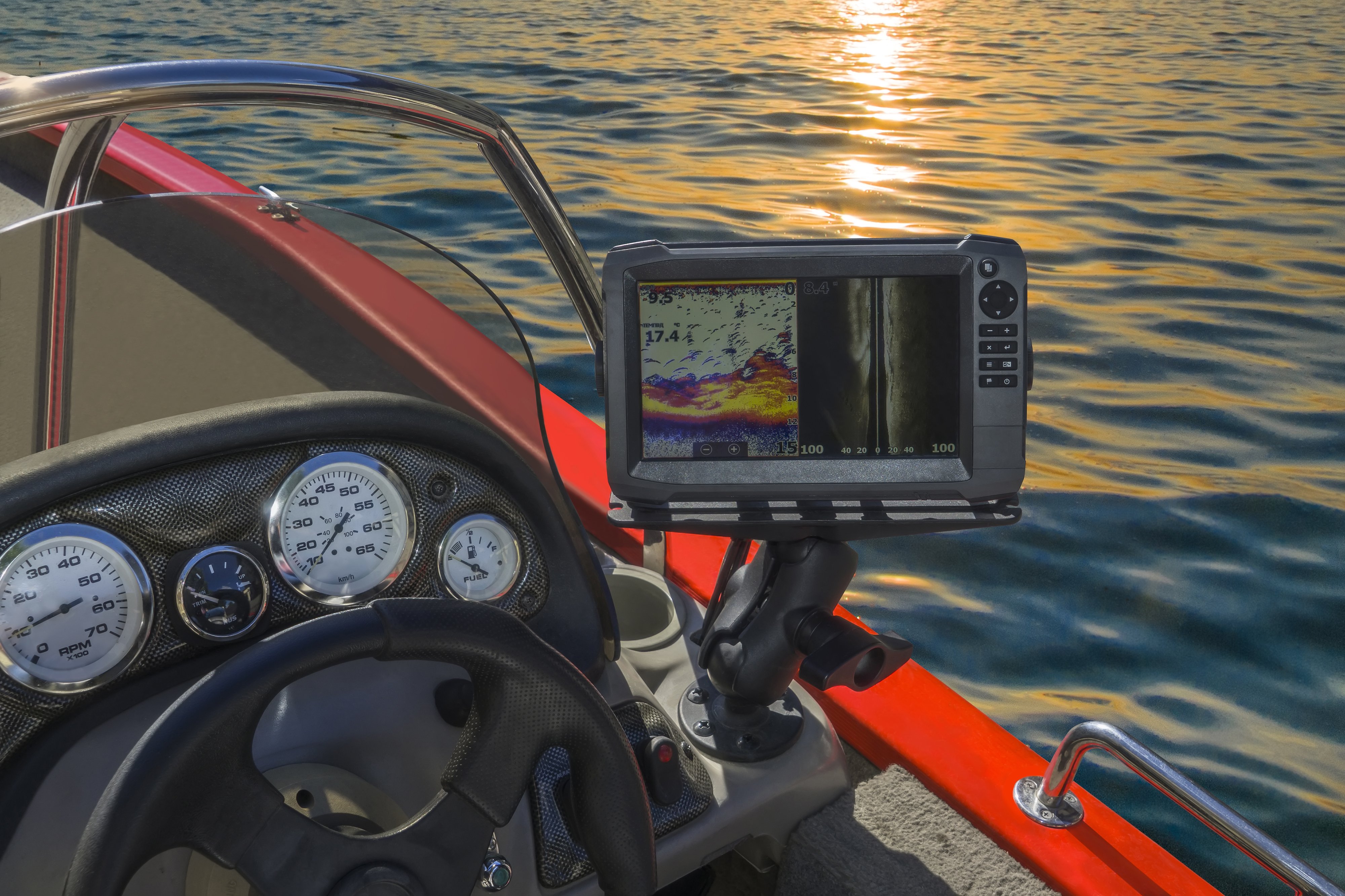
If you’re looking at depth sounders and fishfinders, you’ve likely seen the term transducer pop up. A fishfinder operates by using a transducer where the frequency determines the depth of your signal range and, consequently, the detail of information displayed on the screen.
Generally, higher frequencies offer the finest detail resolution with the least amount of background noise on your screen. However, they can’t penetrate the water as deeply as lower frequencies. The lower your transducer frequency is, the deeper your signal can travel to return data.
When it comes to transducer frequency, it’s often a compromise between clarity and depth. If you’re interested in deep-sea fishing, for example, you’ll probably want a lower frequency. If you’re sticking to shallow bays and coastal waterways, a higher frequency will deliver sharper images that help you choose where to cast next.
Fishfinders for smaller boats often have the transducer included, but transducers can always be purchased separately. Shop all transducers and sonar accessories here.
Do You Need a Depth Sounder, Fishfinder, and GPS?
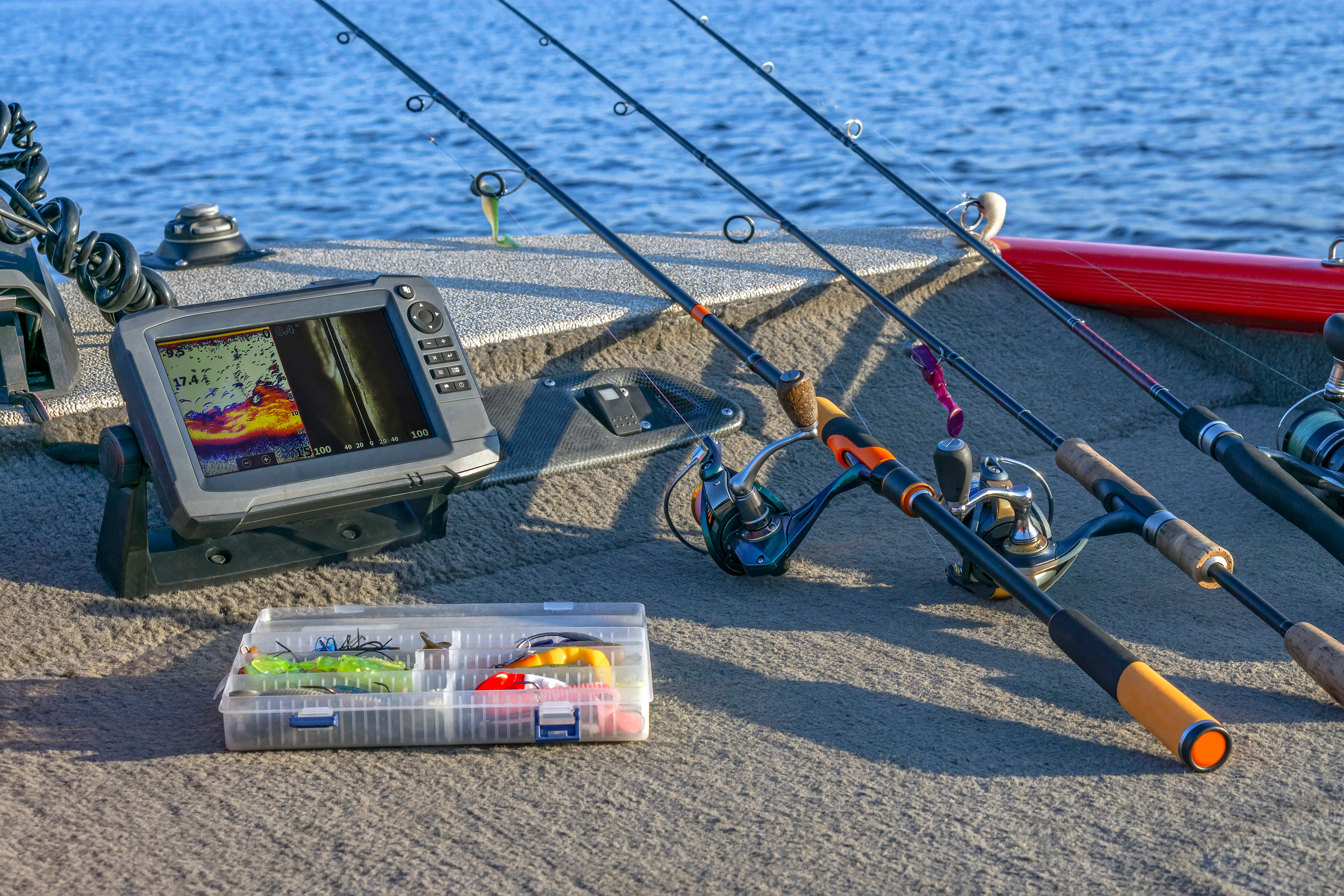
Adding a depth sounder, fishfinder, GPS, or a combination of the two is an absolute benefit to all boaters. For practical and safety reasons, a fishfinder will quickly become a tool you use and rely on every time you’re on the water.
Boats come with all sorts of screens these days, but among the most important is a depth sounder or fishfinder. Ultimately, being on a boat is supposed to be relaxing, and what better way to encourage that goal than with a marine electronic that alleviates some of the pressure?
Whether you decide to use your depth sounder or fishfinder as a tool to locate fish or not, you can still use the electronic as a navigational aid. No one wants to find themselves stranded in shallow waters or, worse, have to get in the water without knowing what’s underneath.
Marine Electronics from Overton’s
Below are view of the best-selling marine electronics from Overton’s to help you with your depth sounder and fishfinder search.
Garmin STRIKER Vivid 5cv Fishfinder
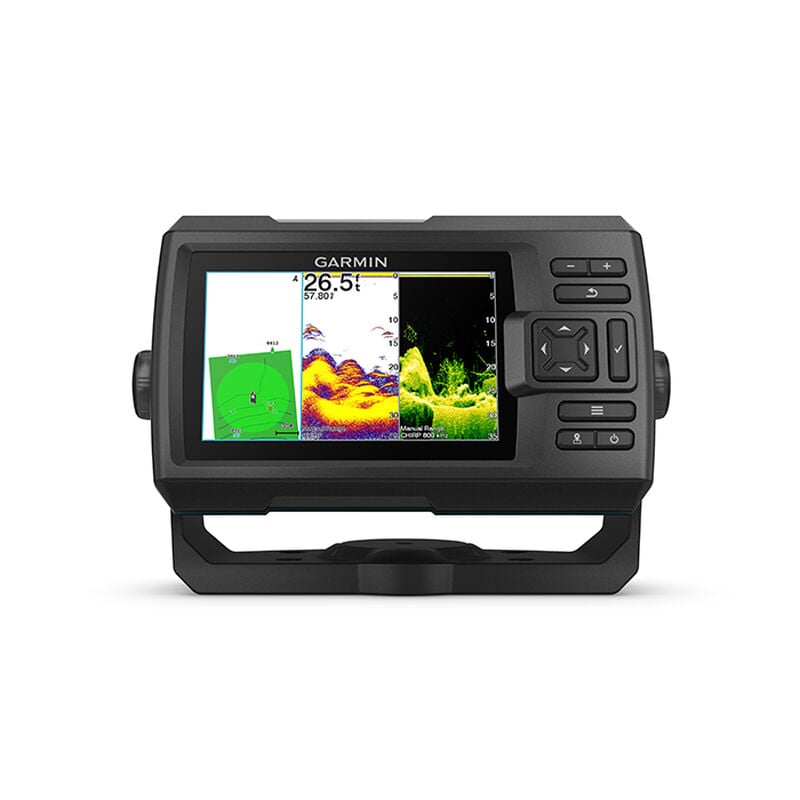
With an easy-to-use 5-inch color display, the Garmin STRIKER offers vivid scanning sonar color palettes that can quickly distinguish between fish and objects. The GT20 transducer supports the built-in Garmin CHIRP traditional sonar and the high-sensitivity GPS marks waypoints, creates routes, and allows you to view your boat’s speed.
Humminbird HELIX 7 CHIRP Mega Di GPS
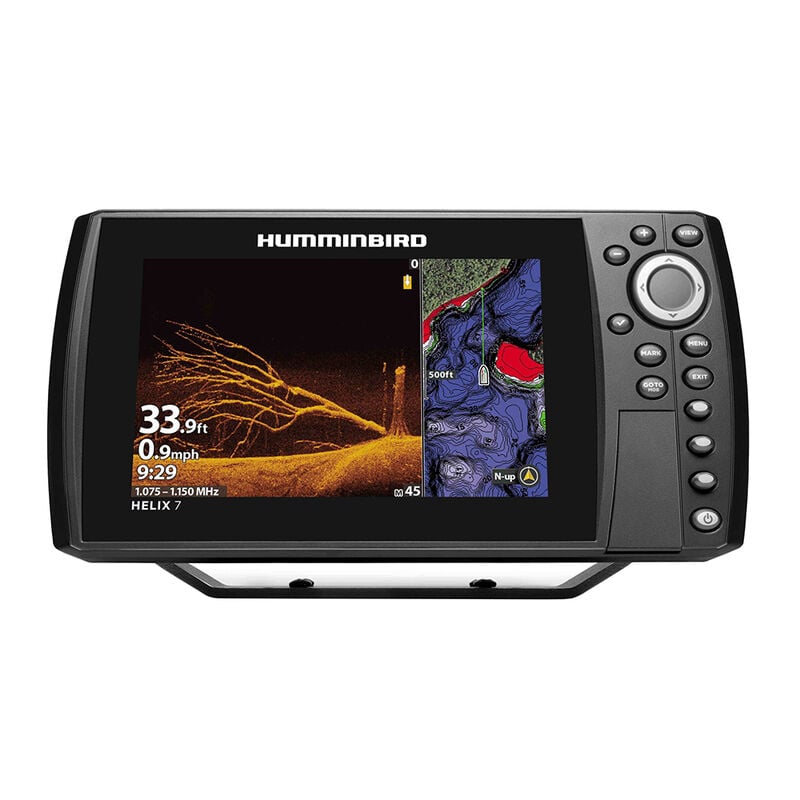
Featuring Dual Spectrum CHIRP Sonar, an internal GPS, and the Humminbird Basemap built-in, the Humminbird HELIX 7 gives you the best view so you’ll never miss a single fish. The high-definition 7-inch display offers several pre-loaded split-screen view options and is compatible with Bluetooth and WiFi — complete control right at your fingertips!
Lowrance HOOK-4X All Season Fishfinder
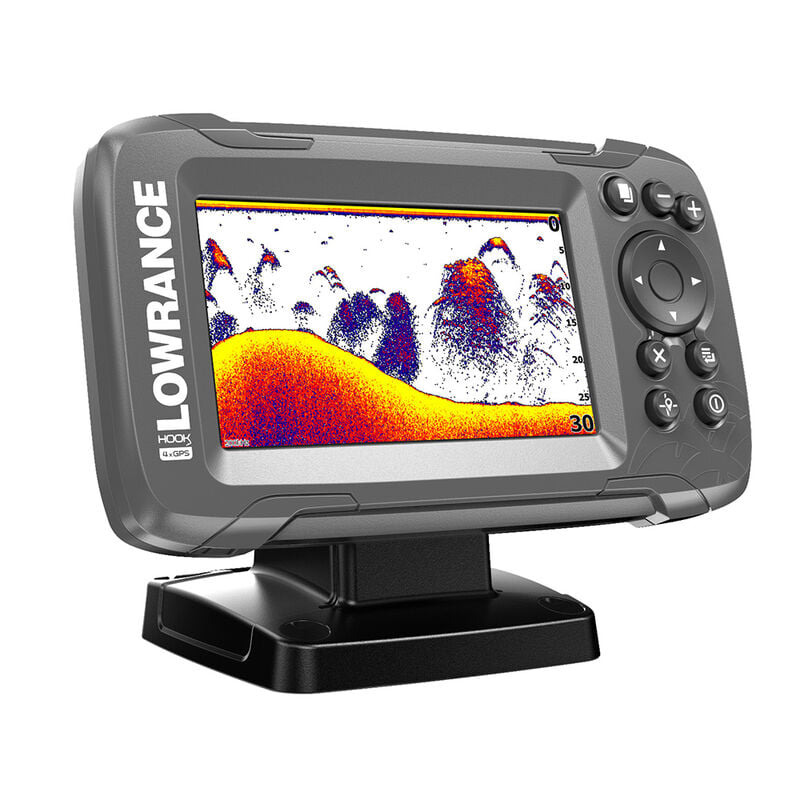
Perhaps the world’s easiest fishfinder to use, the Lowrance HOOK-4X delivers simple menus, smart access to key functions and autotuning sonar. The 4-inch SolarMAX screen gives you crisp, clear views of fish and objects with excellent clarity and daylight visibility. Simply plug it in and fish the day away!
Understanding Marine Electronics
Now that there’s an understanding of what a depth sounder, fishfinder, and GPS are and how they work together to improve your boating experience, you can enjoy choosing the best one for your boat.
After all, knowledge is power. When it comes to using a fishfinder, you’ll quickly find that knowledge leads to a cooler or icebox full of the day’s catch.
Have you used a depth sounder, fishfinder, or GPS when on the boat? Tell us what you love about them in the comments below!

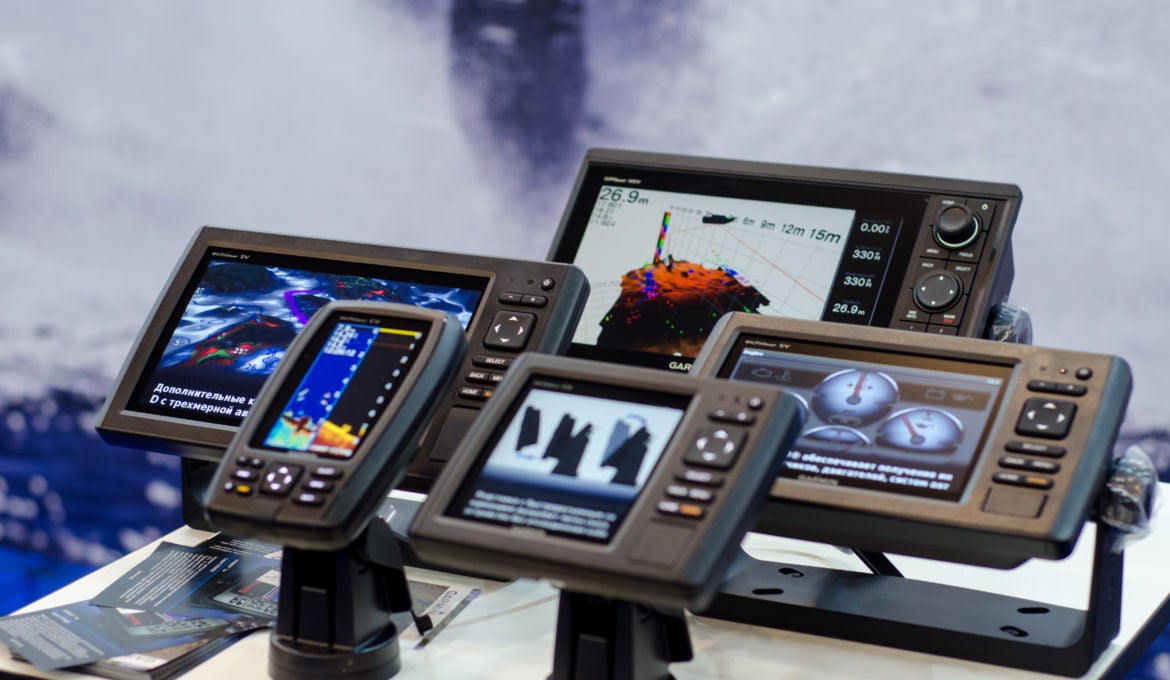



[…] Understanding Marine Electronics: Depth Sounders, Fishfinders & GPS […]